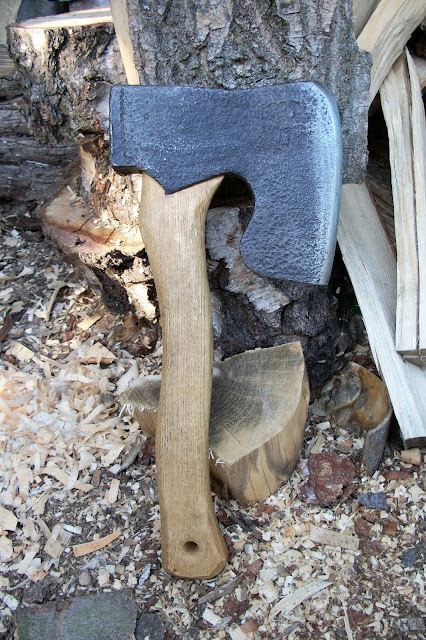A Hidden Gem
 | ||
Blacksmith's Shop in camouflage behind the trees
 | |
Now this is the composting toilet complete with resident blackbird who regularly has three broods a year and who will definitely tell you off every time you nip in. There is a privacy screen but I've never had any problems with voyeurs and the air conditioning is excellent - never had a single breakdown, reliant on wind power!
And finally what I had hoped would be happening....
The point of all this you may well ask??
I had thought that with the amazing anvil and all the wonderful tools I'd collected together that I'd make my own tools and use them for Green Woodwork. I discovered in about half an hour - well probably 5 minutes that being a Smith is not for me. I'm just not a natural and it didn't matter how many times I sparked up that forge or played with the bellows or walloped the steel - I just couldn't connect with this ancient craft. I admire tool makers, it requires an exceptional knowledge and I would like to give someone an opportunity to take on this workshop and make something from it. Preferably tools & money. So I'm offering it to all aspiring Smiths. We are very lucky in our situation here in Essex and there is a connected mains water supply to the Woodland Field. Access is excellent from the nearby M11 and M25 and it's in a beautiful setting. I hope any applicants will make useful things in addition to gewgaws but it's entirely up to them.If you or anyone you know is interested then get in touch...
Oh and I'm going to be messing around with axes over in my Bodger's camp so I WILL take some good photos of everything that looks interesting...



























